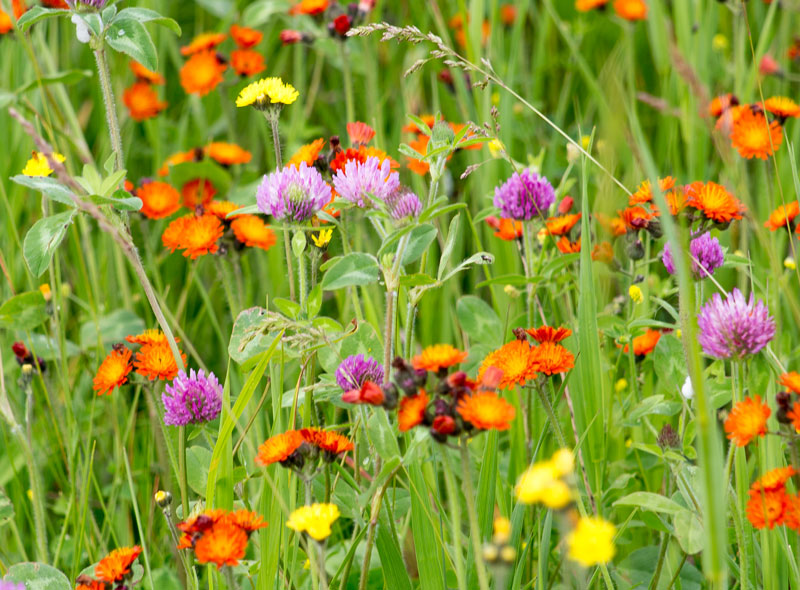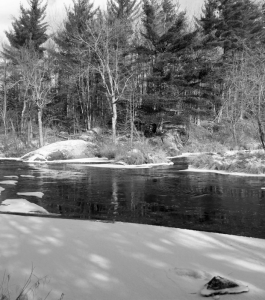Conservation Options
Those wishing to protect their land from undesirable development or use after they no longer can oversee it have a variety of options that are reviewed here. It probably is not necessary to remind landowners that zoning, or even the needs or whims of close relatives, are subject to change. It is a sad commentary on society’s values that most people view land as a commodity, to be bought and sold for profit. Land, however, is a component of Earth’s ecosystem which must function to maintain a healthy environment. Like our bodies, parts can be abused, even lost, and the body continues to function, but each degradation leads to greater dysfunction. To the extent that we each ensure that our piece of Earth’s ecosystem remains intact, all of society profits and is sustained.
Conservation Easement

The development of conservation easements are NCCT’s most common method of land conservation. NCCT works with landowners to develop conservation easements on their properties to protect their land in perpetuity. Once NCCT and the landowner go through the easement development process, the easement will go into effect. It will permanently protect the land using the restrictions laid out in this legal document. Conservation easements are unique to each property and are created with the landowner’s vision for their property in mind. Therefore, the process can take some time, and it is important to know how the process works before going forward with this option. Please visit the conservation easement page to read more about this conservation option or contact NCCT if you have questions.

PURCHASE OF LAND OR EASEMENT
If you are not in a position to donate an easement or your land, but the land has exceptional conservation values which you and NCCT have agreed should be protected, the land or easement might be sold to the land trust. NCCT has very limited resources to purchase easements or land, but in rare cases might be able to organize a fund-raising program to acquire the money. Sometimes, in these rare instances, the landowner is willing to offer the easement or the land at below market price, and thereby contribute to the sale. The amount below fair market value, based on a current appraisal, is a potential tax benefit.

TRADE LAND
Not all real estate will qualify for a conservation easement, but many of the tax benefits discussed above can be still realized by donation of real estate to NCCT. NCCT will sell these donations and use the money to protect conservation land. Thus, you have potential tax benefits and the satisfaction of knowing you have contributed to land conservation, even though your real estate may not have qualifying conservation values.
LAND DONATION

You may choose to donate your land to North Central Conservancy Trust. This may be the best strategy for landowners who do not wish to pass the land to heirs, and have no further use for the property that often is greatly appreciated and may represent a tax burden on the owner or the estate. By gifting it to NCCT, a tax credit for the full value is realized. NCCT, at no cost to you, will place a conservation easement on the property that reflects your wishes, and sell the property to a buyer who understands and accepts the restrictions of the easement. You receive the full tax advantage plus the satisfaction of knowing the land will be forever protected, and the proceeds from the sale are used to protect other land.
More Landowner Resources:
Knowles Nelson Stewardship Fund: https://dnr.wi.gov/topic/stewardship/
Wisconsin Woodland Owners Association (WWOA): https://www.wwoa.org/
Golden Sands Resource Conservation & Development: https://www.goldensandsrcd.org/
U.S. Fish and Wildlife Service, Partners Program: https://www.fws.gov/partners/
Forest Management:
DNR Managed Forest Law: https://dnr.wi.gov/topic/forestlandowners/mfl/
DNR Forest Management: https://dnr.wi.gov/topic/forestry.html
Importance of Young Forests: https://dnr.wisconsin.gov/sites/default/files/topic/ForestBusinesses/YoungForestsFIA.pdf
Water Use and Water Resources: https://dnr.wi.gov/topic/water.html
Invasive Species Control:
Invasive Plants Association of Wisconsin (IPAW): https://ipaw.org/
Central Wisconsin Invasive Partnership (CWIP): https://www.cwipartnership.org/
Sustainable Farming Resources:
Eau Pleine Partnership for Integrated Conservation (EPPIC): https://www.facebook.com/EauPleinePartnership/
USDA Natural Resource Conservation Service: https://www.nrcs.usda.gov/wps/portal/nrcs/site/national/home/
USDA Farming for the Future: https://www.farmers.gov/connect/blog/conservation/farming-future
Conservation:
USDA Natural Resource Conservation Service: https://www.nrcs.usda.gov/wps/portal/nrcs/site/national/home/
Natural Resource Conservation Wisconsin: https://www.nrcs.usda.gov/wps/portal/nrcs/site/wi/home/
Conservation Programs: https://www.nrcs.usda.gov/programs-initiatives
Conservation Planning: https://www.nrcs.usda.gov/getting-assistance/conservation-technical-assistance/conservation-planning
Citizen Science:
Wildlife Monitoring, Snapshot WIDNR: https://dnr.wi.gov/topic/research/projects/snapshot/
Invasive Species Reporting and Prevention Project: https://ipaw.org/the-solution/monitoring/mapping/
EDD Maps (early detection of invasive plants): https://www.eddmaps.org/
iNaturalist: https://www.inaturalist.org/
ebird: https://ebird.org/homee
